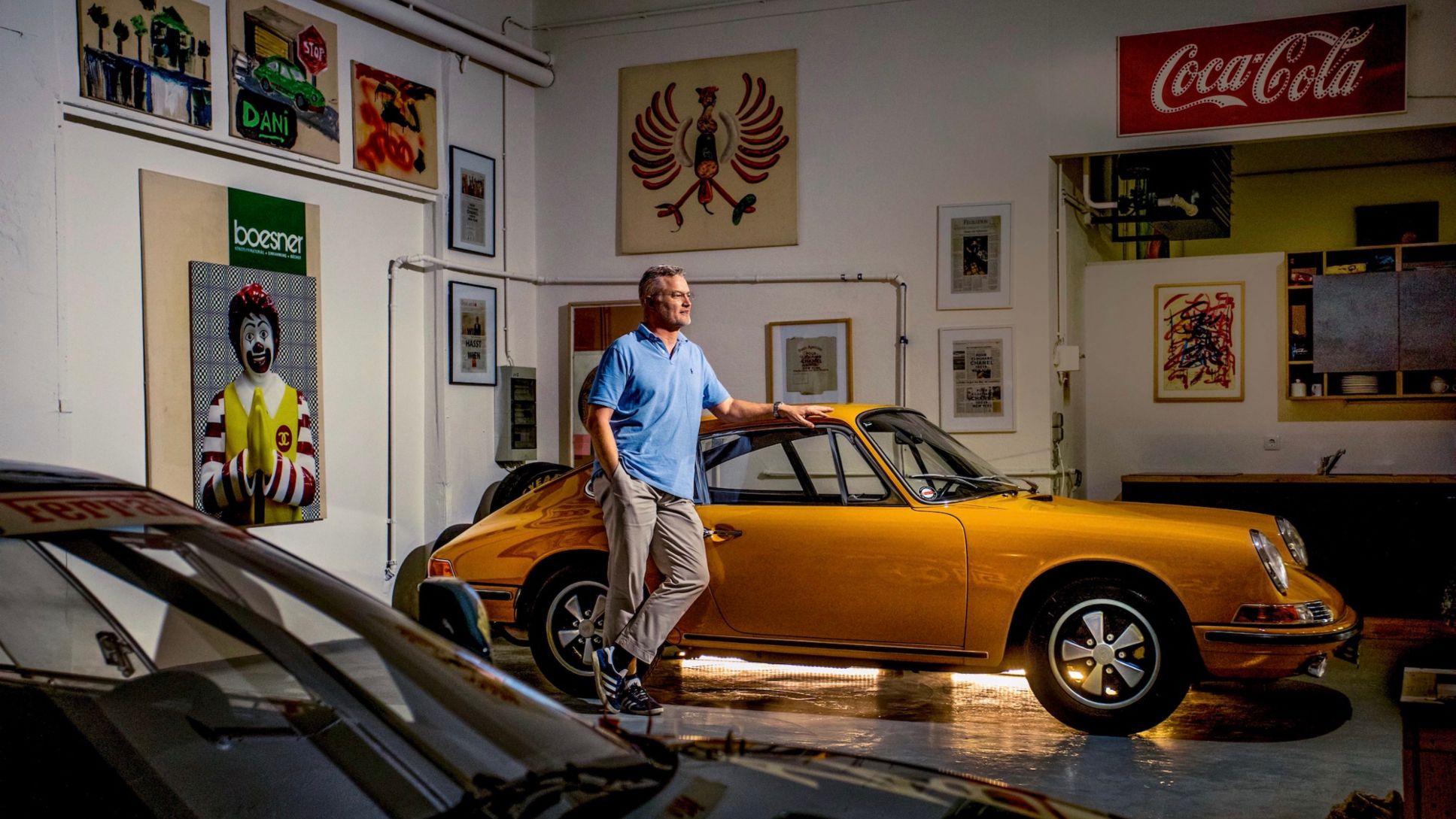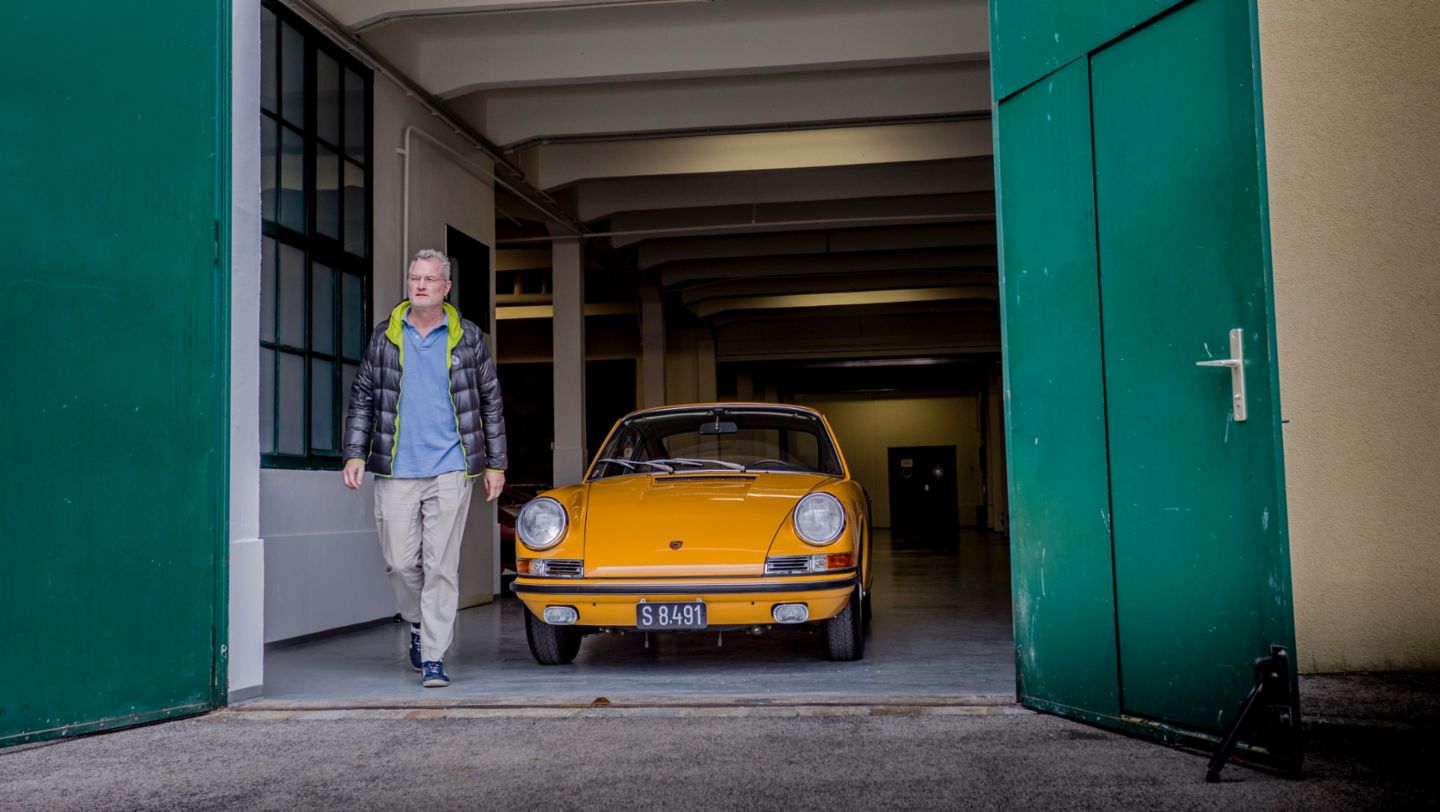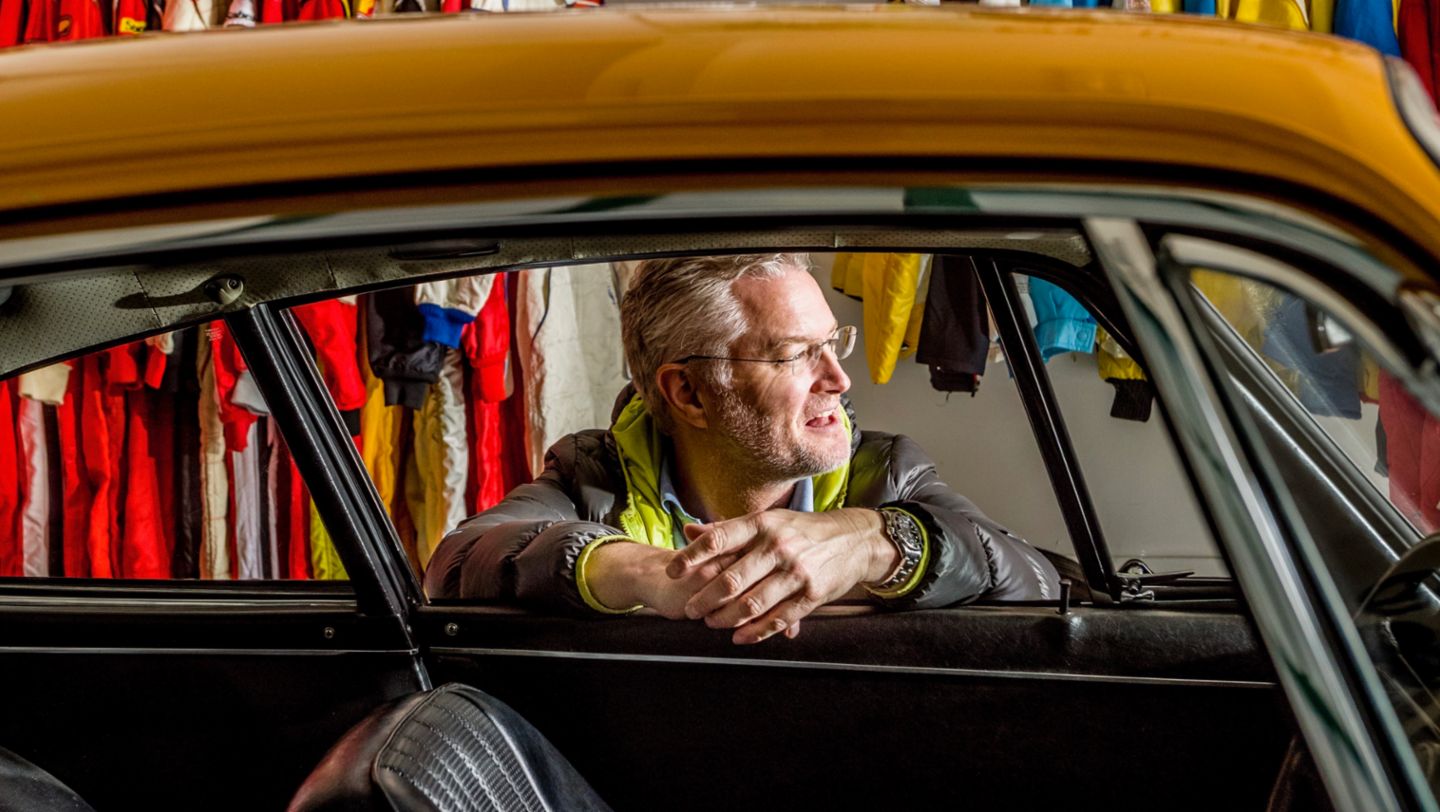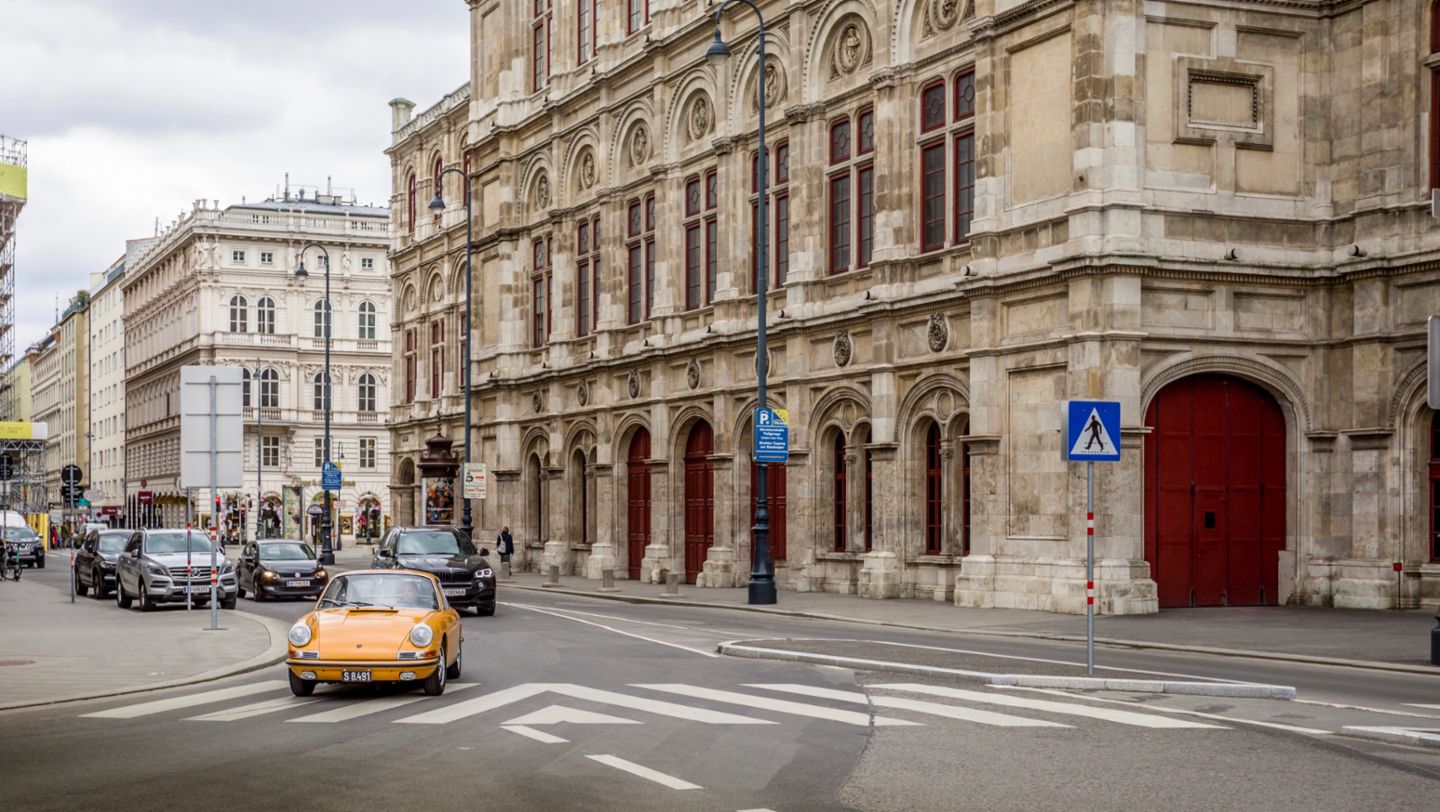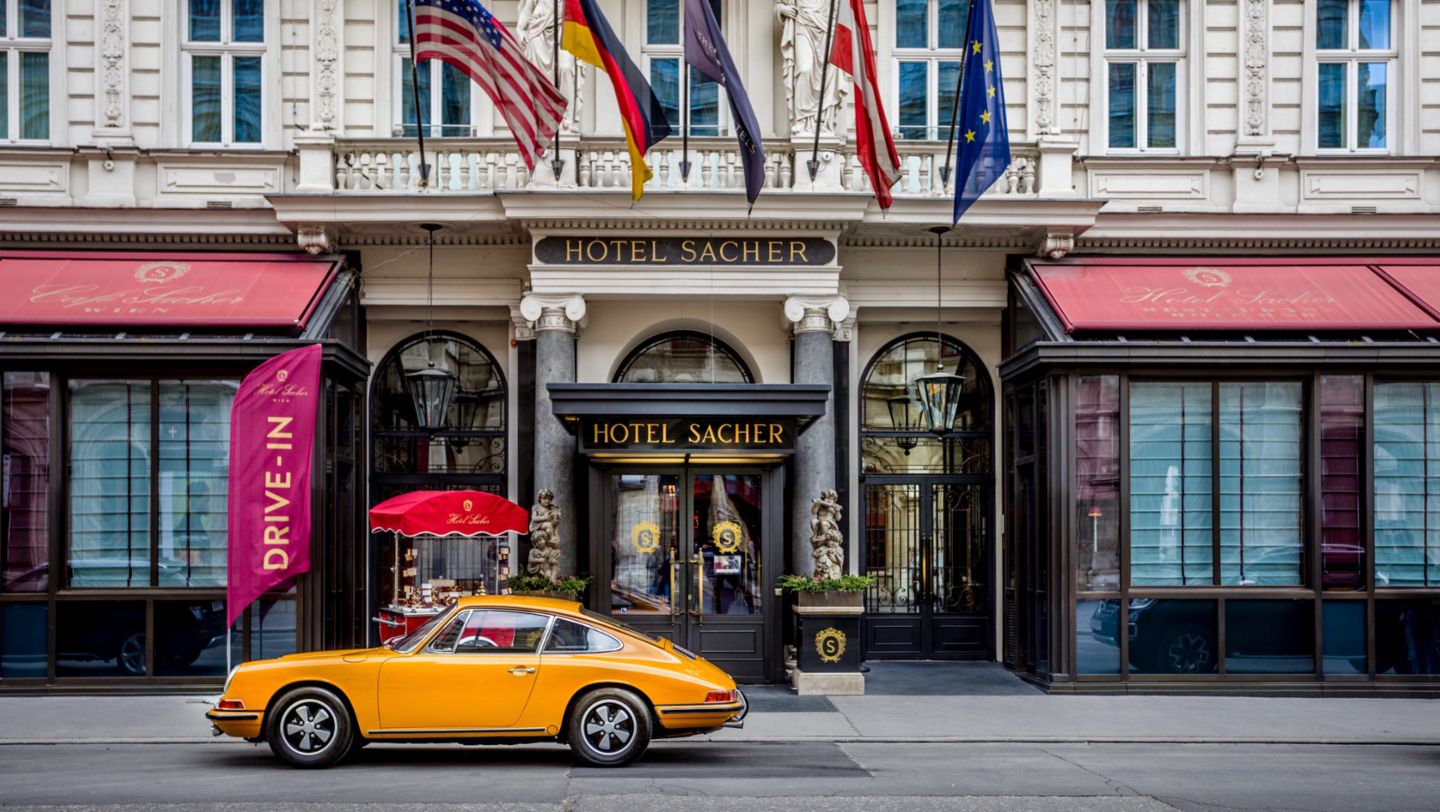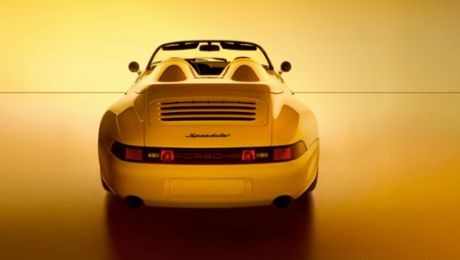It is no secret, and you don’t need to be an aficionado of esotericism to know that there are garages where the cars talk to each other. Not often, and never at the top of their voices. They whisper from under their covers—we know that from a children’s book in which Heinz Swoboda talks about it. And we learn that things happen in garages just as they do in life: when someone new arrives, there’s whispering, and no one wants to commit to how they will fit in with the rest of us at the first moment. After all, he is quite swanky.
Swoboda keeps a simple garage, but it has a multinational stock. Extensive in the interior and even more so as it opens out to the south, towards the vineyards and their gently navigable paths. As a trained car mechanic, he has a good idea of how to handle protégés and keep the essence of mechanics moving. Ideally, he is on the lookout for cars with character. Particularly when they have had their dents over the years, it is all the more exciting to give them back their identity. There is often a connection to racing.
The first pop star of Formula One
For example, there was this very used Porsche 911. It was once driven by Formula One legend Jochen Rindt before countless kilometers of rally driving drove it to the brink of destruction. After fifty years, there was not much left but the basics of a 911, all of course with splendid origins and incisive memories. Jochen Rindt is a great figure in motor-racing history. For those who don’t know him, the quickest way to find him is with the search terms “first pop star of Formula One” or “posthumous world champion.”
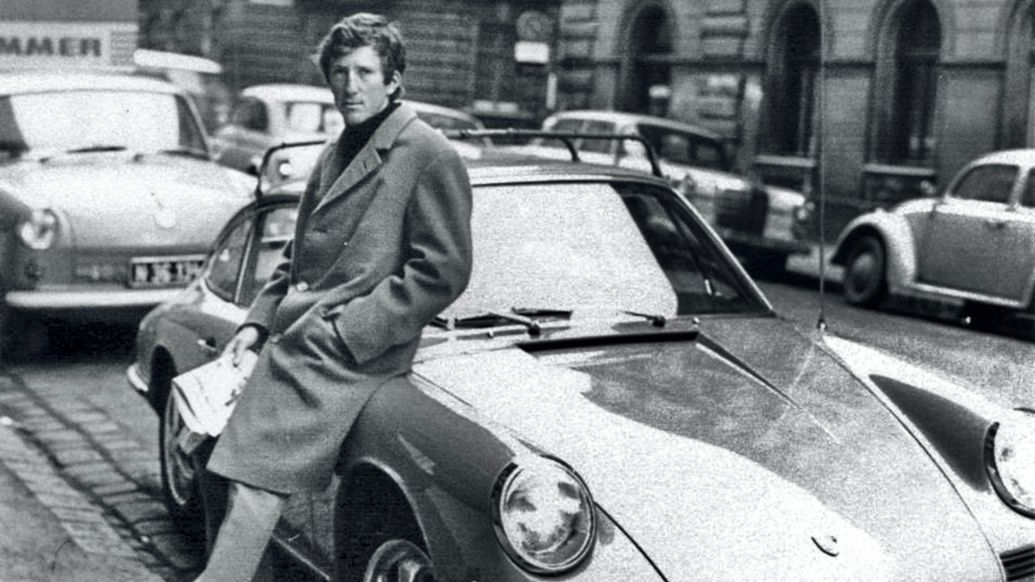
A pop star in racing—referring to the emotions he evoked and broad appeal he enjoyed. In the mid-1960s, there was a longing for radiance, in Germany as well as in Austria. Rindt was extraordinary: the way he moved, the way he talked, the way he became more and more dazzling and attractive. The Formula One scene in the late sixties is illuminated by names like Jackie Stewart, Graham Hill, Jim Clark. Their personalities are a breath of fresh air for the sport. The epithet “posthumous” recalls Monza, Rindt’s accident, the fatal one. At this point, Rindt had a clear lead in the 1970 world championship; no one could catch up with him in terms of points. He only received his title at the end of the season, hence posthumously.
The 911 S as company car for Jochen Rindt
By 1967, Rindt was at the top of his game. In addition to Formula One, he also drove endurance races in 906, 907, and 910 Porsches, from Daytona to Le Mans. The Austrian Porsche importer in Salzburg registered a company car for Rindt in May 1967. A 911 S with 160 PS, the first production model from Zuffenhausen with Fuchs rims. It was also equipped with an optional Webasto auxiliary heater and Bahama Yellow paintwork, a color that had only just been discovered by Porsche’s paint developers in the light of a Caribbean morning. A 911 in Bahama Yellow was a singular event and perfectly suited the Viennese suburb of Hietzing, where Rindt lived. From photos in the cockpit we know that Rindt had beige gloves on; they may provide a clue for the contemporary historian about the feel of the early steering wheels made of hard plastic.
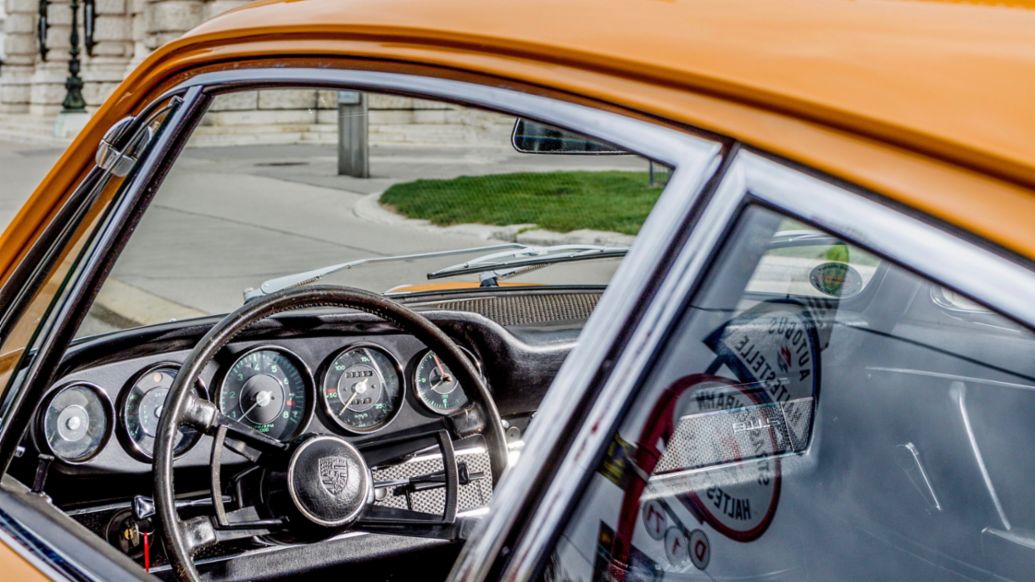
In 1967, Rindt competed in thirty-nine races, winning thirteen of them. It can be calculated that the 911’s use on shorter European trips remained modest. We know of an overnight drive from Vienna to Rouen; Formula Two training started the next morning. The field once again included names from the sagas of motor racing—which would soon include the young pop star Rindt: Jim Clark, Jackie Stewart, Jack Brabham, Bruce McLaren. Rindt won the race.
When it became apparent during the 1968 season that Rindt would switch to Lotus, his relationship with Porsche ended and his bond with the 911 with the license plate S 8.491 also came to an end. Although Rindt was never accused of being overly gentle with his cars, there is only one dent on the front bumper of his 911 on record. From the point of view of the Austrian importer, the car was to remain within motor racing, was re-registered, and was kept ready for rally use by special teams.
The success of the search for traces
The fact that the 911 found its way into Swoboda’s garage in the south of Vienna is thanks to an almost forensic level of tracing. Several times, the scent of the Rindt car got lost. But at the decisive moment, Swoboda was able to seize the opportunity. He had the car restored to Rindt condition, from the brittle steering wheel to the Bahama Yellow paintwork. The Fuchs rims are of later vintage. The houndstooth pattern on the inside seat panels could no longer be realized in the traditional design.
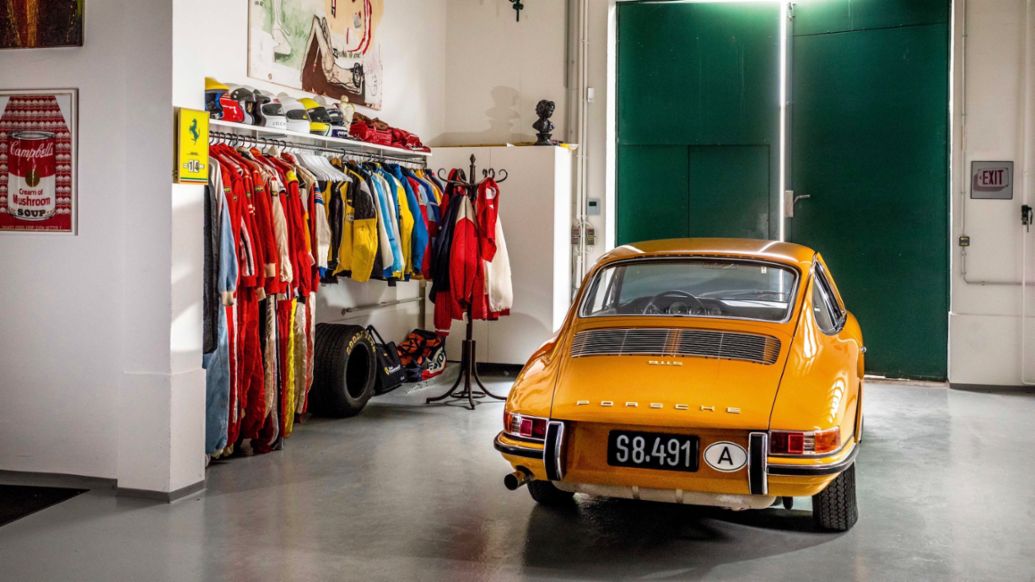
This means that the car is almost back to the way it was, but with a touch of new life. Maybe he, the new guy, will tell the others in the garage about it or just think of the leather gloves of yesteryear and the delicate artistry of the driver on the smooth steering rim.
Info
Text first published in the Porsche customer magazine Christophorus, No. 400.
Author: Herbert Völker
Photographer: Theodor Barth
Copyright: All pictures, videos and audio files published in this article are subject to copyright. Reproduction in whole or in part is not permitted without the written consent of Dr. Ing. h.c. F. Porsche AG is not permitted. Please contact newsroom@porsche.com for further information.
